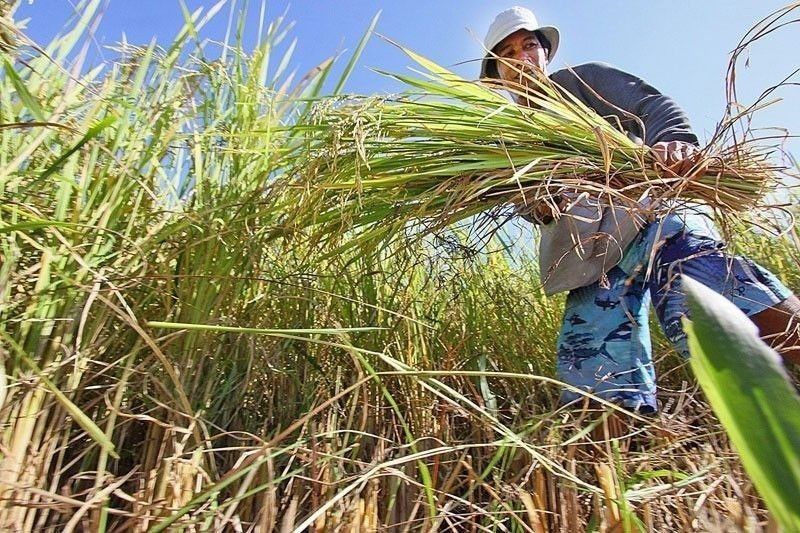Commentary: Shifting strategies in Philippine agriculture

Innovation revolutionizes the status quo and brings developmental change. Among the economic sectors that have been a focus of technological advances, agriculture outstands as it primarily concerns food production and security.
Today, Philippine agriculture confronts the central problem of productivity and efficiency. Under Secretary William Dar’s leadership, the Department of Agriculture (DA) envisions “A food secure Philippines with prosperous farmers and fisherfolk.” This could only be realized through a modernized or industrialized agriculture.
The vision is also anchored on a “new thinking” that subsumes the following 8 paradigms (Sure 8 / 8-Point Program) to put into place the required policies, programs, projects, and funding:
1) Modernization must continue
2) Industrialization of agriculture is key
3) Promotion of exports
4) Consolidation of small and medium sized farms
5) Infrastructure development would be critical
6) Higher budget and investment for Philippine agriculture
7) Legislative support
8) Roadmap development for productivity, profitability, competitiveness, sustainability and resilience.
Arguably, the most challenging element is the second one, which states that “industrialization of agriculture is key.”
In a nutshell, the Philippines can no longer cling on to the practice of backward agriculture. Moreover, this model evokes the need for a government-community-business synergy where each sector performs an important role in the industrialization process.
Accordingly, industrializing the value chain of every agricultural commodity necessitates the active leadership to be provided by involved leading bureaus and attached agencies and corporations.
More so, effective collaboration with the business sector could ensure that markets and even agri-based industries could be set-up along the way. In this manner, production is directed, and additional value is created for agricultural products.
State colleges and universities in the provinces would also be helpful in determining the necessary linkages as they “know first-hand what type of industries related to agriculture that can be established in their areas based on current activities, and potential from various factors like water and soil resources, climate and location, and markets.”
Aside from active leadership, government must also provide “more investments on income- and market-oriented agricultural research for development (R4D).”
For this to materialize, our national government officials and legislators should be able to allot the sufficient and necessary funds for the DA.
It also in this aspect where the private sector could contribute significantly. Unfortunately, it has been a historical blunder of not providing enough for the agricultural sector.
Specific to the creation of markets and the setting up of agri-based industries, “community agricultural management companies/corporations (CAMCs)” could likewise be formed.
Operating at the village or municipal level, these CAMCs would play a role in industrializing and modernizing the rural economy.
Industrialization also subsumes the digitization of farming and agribusiness activities. These practices that involve the use of smart technologies abound in the different aspects of agriculture such as: fertilizer, pesticide, and herbicide application, optimal planting, weed identification and removal, and milking of cows.
The whole process or the various steps that have been undertaken for the past four decades toward agricultural industrialization could be contextualized in the landscape of the “fourth agricultural revolution” or Agriculture 4.0.
Critical as well with the adoption of technologies is the consideration of existing indigenous knowledge systems and practices. Such consideration would surely encourage a broader scope of community participation and involvement.
Technological revolutions, as we know, are radical and far-reaching.
However, what differentiates the current “fourth agricultural revolution” with past technological revolutions is the required degree of social responsiveness amidst the effort of boosting productivity and enhancing efficiency.
As Dar also emphasized, “let us not forget establishing sustainability and resiliency every step of the way.”
The industrialization process should not only be sustainable and resilient but also inclusive with the formation of social enterprises integrated in the process to ensure the inclusive involvement and benefits for the marginalized.
Attuned with the perspective of social responsiveness is an earlier account by Rose and Chilvers (2018) and they aver: “Indeed, some studies argue that agricultural societies may be changed, or “re-scripted,” in undesirable ways, and there is precedent to suggest that wider society may be concerned about radical new agricultural technologies. We therefore encourage policy-makers, funders, technology companies, and researchers to consider the views of both farming communities and wider society.”
As the aforementioned are simply saying that innovation should be socially responsible, a balanced policy between technology and social responsibility would be key in promoting sustainable agriculture.
It is high time to supplant backward agriculture with forward looking approaches and the responsible adoption of appropriate technologies.
Jaime Jimenez is deputy executive director for research at think tank Stratbase ADR Institute.
- Latest


























